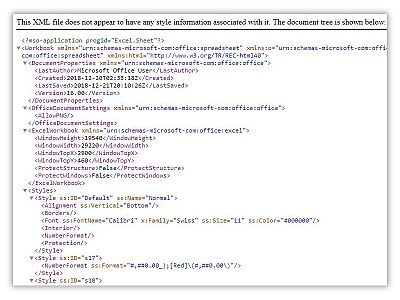Doctor, doctor, give me the news, I've got a bad case of MR BR PLEXUS/NECK W 6467
Hospitals have posted the prices of their services. Good luck making sense of them.
Since Jan. 1, hospitals across the country have been publishing price lists online to comply with a new Trump administration rule. But the resulting documents, which can include as many as 60,000 items, are hard to decipher, with descriptions like "ABBOTT TECNIS TORIC ASPHERIC IOL ZCT300 21.0D SE 3.00 CYL." and "FILL, PULL, VOID." And if you're not a data analyst or a programmer, you might have trouble reading the files at all.
So far, the biggest hospitals have largely complied with the rule. A NBC News analysis of the 24 largest hospitals in the country found that 19 made documents available, although the lists were often buried many clicks deep on the hospital's website.
Officials behind the rule say it will improve transparency about hospital costs and encourage comparison shopping. Health care advocates are lukewarm on the rule and doubt it will ultimately help patients act more like consumers.
"Honestly, it doesn't do a whole lot," said Shawn Gremminger, senior director of federal relations at the health care advocacy group Families USA. "It doesn't necessarily tell consumers anything that is really helpful in terms of making decisions."
The issue, advocates say, is that the documents produced by the rule are difficult to find, difficult to understand, difficult to compare, and don't reflect the final prices consumers will actually pay.
Descriptions in the documents can be vague, with similar-sounding services carrying vastly different prices. For example, the price list at NewYork-Presbyterian Hospital, based in New York City, includes a service called "TREAT FINGER FRACTURE EACH" for $479. But the list also has another service, "TREAT FINGER FRACTURE.EACH," that costs $8,121.
A hospital representative told NBC News that the $479 procedure represented treatment for a minor fracture, while the $8,121 procedure is for a severe bone break.
When descriptions aren't vague, they are often listed in complex shorthand, like "LCSKUB T/A/L>=100CM 1ST 100SQ" and "#10X HOOK," which are listed in Miami's Jackson Memorial Hospital price document.
A Jackson Memorial spokesperson told NBC News that the hospital featured an online tool that provided custom price quotes, as well as a phone number for customers who have questions.
Even the types of documents produced by hospitals vary. Some hospitals made web pages with prices in tables, while others published a downloadable spreadsheet. Still others made their prices available as JSON or XML documents, file formats more often used by programmers and data analysts than consumers.
"It's virtually impossible for a layperson to read," Gremminger said. "It's a list hundreds of pages long with every single potential service a hospital can provide. It's almost impossible to tell what is what."
One reason the documents vary across hospitals is that the rule itself is broad. The rule, issued by the federal Centers for Medicare and Medicaid Services, states only that hospitals must "make available a list of their current standard charges via the internet in a machine readable format." That list can be the hospital's "chargemaster" — a standard industry price list document — or any other document of the hospital's choice.
Those who follow the health care industry say there is value is making prices public. National Patient Advocate Foundation spokesperson Caitlin Donovan said the documents will benefit advocacy groups, journalists, and researchers covering the industry.
"For hospitals to have a chargemaster where they think it's appropriate to charge $1,000 for a Band-Aid, that's important for the public to know," Donovan said.
But the problem, advocates say, is that the prices listed are essentially irrelevant. An insurance company will have negotiated a lower price for a service. Costs to patients on Medicare, Medicaid, or Veterans Affairs health care are capped by law. And low-income patients without insurance will likely work with the hospital's billing department to lower their totals.
"The only person who would pay the chargemaster price is an uninsured person who has money and is paying out of pocket," Gremminger said.
Hospitals are aware of the limitations of chargemaster documents. Legacy Health, a hospital system in Washington and Oregon, writes on its pricing page that chargemasters are "not a helpful tool for patients to comparison shop between hospitals or to estimate what health care services are going to cost them out of their own pocket."
The administrator of the Medicaid and Medicare center, Seema Verma, said the rule, which the center is still trying to figure out how to enforce, represented a "first step" toward transparent pricing and that hospitals weren't prohibited from going further.
"Price transparency in health care is one of the biggest priorities for CMS and the Trump administration," Verma said.
Verma also pointed out that some hospitals went beyond the rule, such as the University of Utah Health. The health system set upan online price comparison tool for the 70 most-common procedures and a call center so that patients can get further help determining the prices they should expect to pay, based on their insurance and circumstances.
Gremminger said his group would like to see more such tools, but added that the biggest step toward price transparency would be making hospital-to-insurer negotiations public. Currently, those negotiations are confidential, which allows hospitals to charge insurers different rates for the same services.
"Hospitals and insurers have a financial incentive to keep it as complicated as it is."












